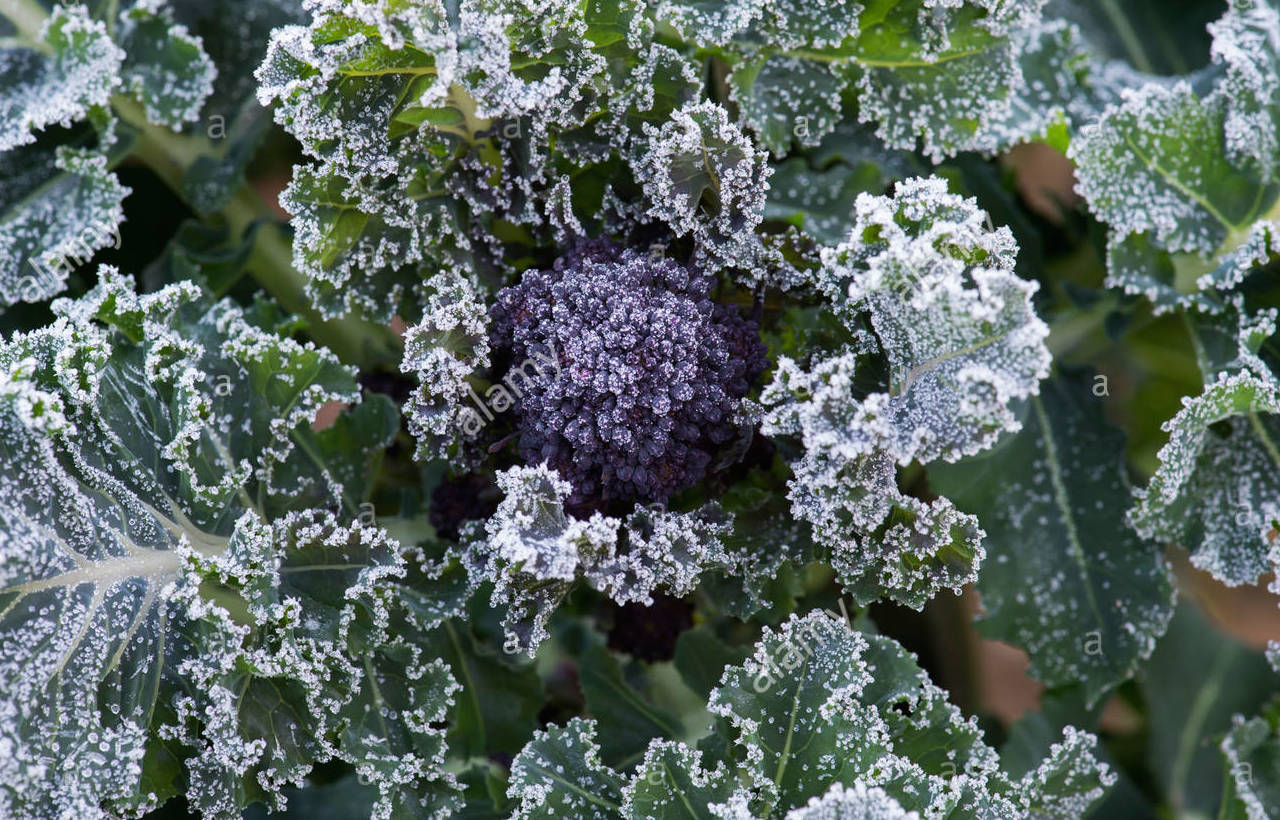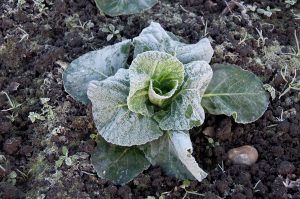
Winter gardening is a great pleasure in the relatively mild winters here. The problem is that, in late December and January, cold snaps come down the flat American plains from the Arctic and hit us with temperatures in the high teens and 20’s. The first Winter front rolled in earlier this week and the thermometer dipped to 32 degrees.
I walked out to find the tomato and pepper plants blackened; the banana tree looking like rags on a pole and the zinnias and cannas black and stiff. All of these are tropical or semi-tropical plants beloved by me, but frowned upon by native plant enthusiasts. My honeysuckle, salvia, sunflowers, asters, roses and mistflowers are perfectly fine; flowering enthusiastically in the cooler weather.
The broccoli, pictured above is well able to survive a freeze. As are many other vegetables. Conventionally, freeze means the temperature at which water changes to a solid–but many plants can continue to grow after being “frozen.” Gardeners who describe this little miracle use a broad variety of freeze language: light freezes, hard freezes, severe freezes, killing frost and just plain frost.

My beets, carrots, lettuce, endive, cauliflower and parsley will survive a “light” freeze, meaning down to about 28 degrees. The cauliflower and beet leaves get a little burned and a few die. If I love a vegetable I plant extra for the November and December dinner table.
The prairie grasses and weeds that invade all summer are dormant; the bugs and fungus are dead. The work is at least half of maintaining a summer garden. I use a thick mulch of hay but I am too lazy to regularly cover things early in the season or set up little plastic greenhouses. The weather here is often in the 60’s and 70’s in ‘winter’ and anything under plastic gets too hot.
January and, sometimes February, bring serious cold. Happily, there are plenty of vegetables to take over as the winter temperatures start biting hard. Spinach, leeks, broccoli, cabbage and arugula can withstand severe frosts down to about 24 degrees. Brussels sprouts can even survive a dip below 24 and hang on all winter. Loose leaf lettuce will survive down to 20 degrees. Kale is said to be hardy to 10 degrees although I have not had the pleasure of observing that amazing feat. In late January, there will be at least a bit of lettuce, some Brussels sprouts and; of course, kale for dinner.
I’ll toss a “plant blanket” (called a Plankett at garden centers) on vegetables that are doing well and weight the edges with rocks when the temperature is expected to go really low. Winter gardening isn’t all fun–I have been out with a flashlight on bitter nights, sometimes in my party clothes, covering the plants when an unexpected cold front hits.
But plants give back; always. That’s why I love them.